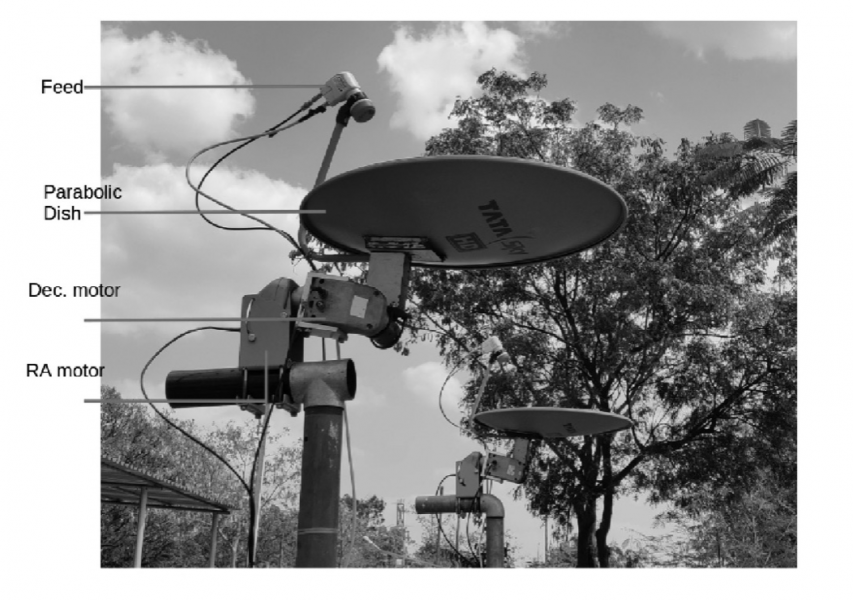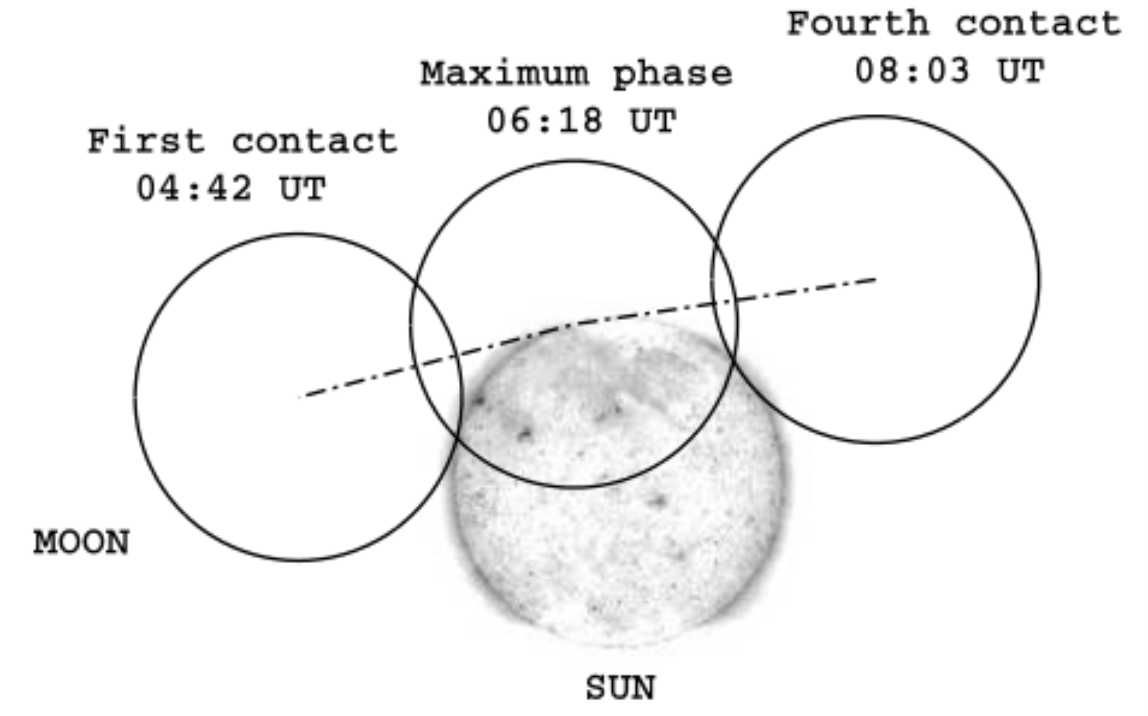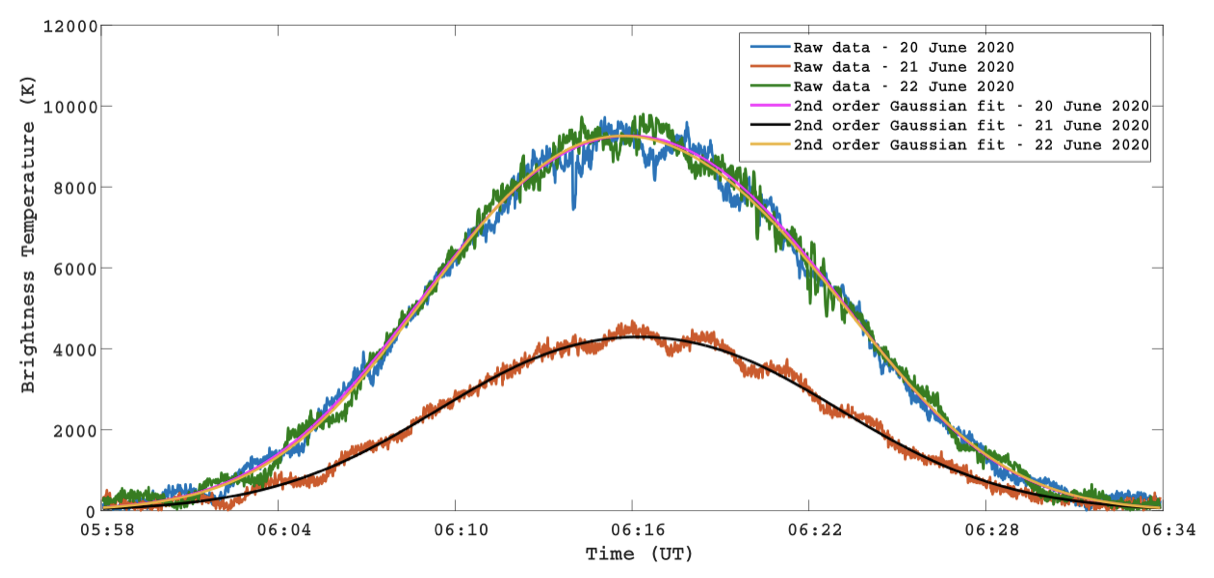Commercial dish TV antennas are parabolic structures designed to receive radio waves from a communication satellite. The antennas and the associated front end receiver systems have improved with advances in the TV systems. They operate typically over the frequency range 10.7 – 11.7 GHz (Ku-band) and provide very good signal-to-noise ratio (SNR). It is well known that the Sun emits intense radio emission in the above frequency range with brightness temperature $T_{b}{\sim}10^{4}$K. The emission is primarily due to thermal free-free mechanism and originates in the upper chromosphere. It is well established that $T_{b}$ is one of the basic properties of the Sun. Hence its routine monitoring is widely used as a diagnostic tool to understand the different types of temporal changes. We attempted observations of the Sun in the microwave frequency range with a pair of commercial dish TV antennas. The observations were made in the correlation interferometer mode since it provides better sensitivity.
Observation and Data
We had set-up a correlation interferometer with a separation of ${\approx}$ 2.5m between the two dish antennas. The baseline between the antennas is oriented in the East-West direction. So, the theoretical angular resolution in that direction (for observations near the zenith), specified by separation between the interference fringes, is ${\approx}37^{\prime}$ at 11.2 GHz. The angular size of the Sun at 11 GHz is ${\approx}33^{\prime}$ (Furst79). Since this is smaller than the aforementioned fringe spacing, Sun can be assumed to be a ‘point’ source for our observations. The corresponding resolution in the North-South direction is ${\approx}3.02^{o}$, i.e. the HPBW of the dish.
 Figure 1. The commercial dish TV antennas used in the Gauribidanur observatory for solar observations in the correlation interferometer mode.
Figure 1. The commercial dish TV antennas used in the Gauribidanur observatory for solar observations in the correlation interferometer mode.
Trail observations of Moon and the Sun were carried out with the Ku-band interferometer. The gain variations of the receiver were by monitoring the Ku-band transmission from geostationary satellites INSAT 3A & 4A. The $T_{b}$ of the Moon and the Sun were thus estimated to be ${\approx}$227${\pm}$52K and ${\approx}$9266${\pm}$2108K, respectively.
The solar eclipse of 21 June 2020 was partial at Gauribidanur observatory with magnitude ${\approx} $0.493 and obscuration ${\approx}$38.33 %. The solar eclipses are always partial at radio frequencies since the angular sizes of the `radio’ Sun in the frequency range over which it is typically observed from the ground are larger compared to that of the Moon. The average angular size of the Moon is ${\approx}31^{\prime}$, the corresponding values for the ‘radio’ Sun at 11 GHz and 80 MHz are ${\approx}33^{\prime}$ and ${\approx}38^{\prime}$, respectively (Borovik 1980, Ramesh et. al. 2006).

Figure 2. Positions of the Moon during the first contact, maximum phase, and fourth contact of the 21 June 2020 solar eclipse (as seen from Gauribidanur observatory) overlaid on the 211 Angstrom image of the Sun obtained the same day at ${\approx}$ 06:30 UT with the Atmospheric Imaging Assembly on board the Solar Dynamics Observatory (SDO). North is straight up and east is to the left.
 Figure 3. Observations of the Sun with Ku-band interferometer on 20, 21, & 22 June 2020 in the transit mode after tilting the antennas towards the direction of the Sun.
Figure 3. Observations of the Sun with Ku-band interferometer on 20, 21, & 22 June 2020 in the transit mode after tilting the antennas towards the direction of the Sun.
Figure 3 shows the results of our observations on 20 June 2020 (the day before the eclipse), 21 June 2020 (during the eclipse), and 22 June 2020 (day after the eclipse). The observations on 21 June 2020 were during the maximum phase of the eclipse. The estimated $T_{b}$ of the Sun at $\approx$11.2 GHz (after calibration using observations of the Moon with the same set-up) on the above three days are ${\approx}$9266K, 4294K, and 9263K, respectively. The $T_{b}$ on 21 June 2020 is lesser by ${\approx}$54 %. There were three noticeable active regions in the northern hemisphere of the Sun were fully occulted during the maximum phase of the eclipse. This could be the reason for the aforementioned reduction in $T_{b}$ (though the eclipse obscuration was only 38 %) since radio emission associated with the active regions constitute a significant fraction of the total emission from the Sun (Covington 1947, Mayfield et. al. 1971).
Summary
We have reported successful radio interferometric observations of the Sun at ${\approx}$ 11.2 GHz using two commercial dish TV antennas operating in the Ku-band (${\approx}$ 10.7-11.7 GHz). The results obtained are encouraging for our plans to set up an array of such antennas for dedicated and synoptic two-dimensional spectroscopic imaging observations of the Sun in the above frequency range with minimal budget. Work is in progress to fine tune the pointing accuracy of the dishes and develop a FPGA based spectrocorrelator to observe over the entire 10.7-11.7 GHz frequency band.
Based on the recent paper: Gireesh, et. al.: Radio Interferometric Observations of the Sun Using Commercial Dish TV Antennas. Solar Physics, 296, 121 (2021), DOI: https://doi.org/ 10.1007/s11207-021-01871-9
References
Covington, A. E. (1947). Nature, Volume 159, Issue 4038, pp. 405-406 (1947).
Borovik, V. N. (1980). Soviet Astronomy Letters, vol. 6, July-Aug. 1980, p. 236-238.
*Full list of authors: G. V. S. Gireesh. C. Kathiravan, Indrajit V. Barve, R. Ramesh
